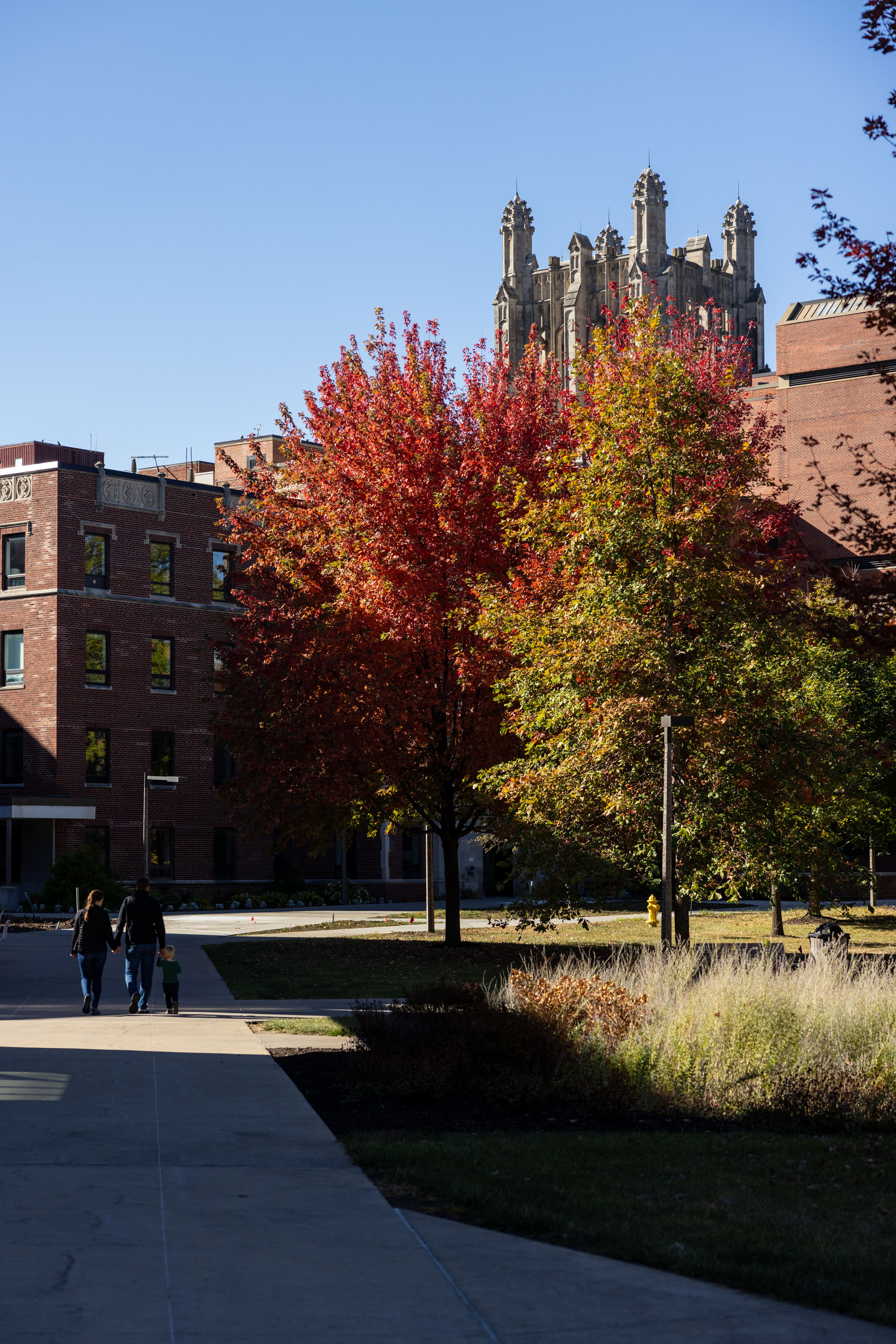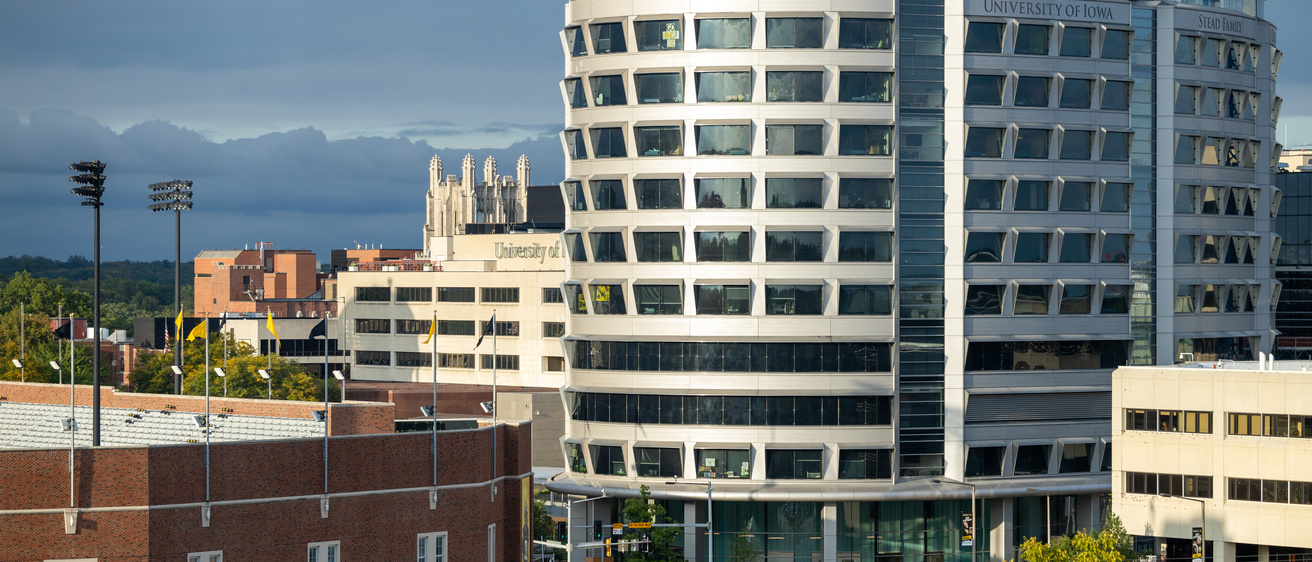Main navigation
What's so good about Iowa?
- Our faculty are exceptionally dedicated teachers, kind, curious, and compassionate.
- We have a diverse faculty with wide-ranging clinical and research interests.
- Some of our faculty are internationally known and have been with us for many years.
- We also have several bright young faculty who bring new interests and enthusiasm to the practice.
- All the subspecialties are represented in our training program.
- Our programs, clinical and teaching are consistently ranked in the top ten nationally.
- The clinics, hospital, and inpatient units are located within a single hospital, with 1 rotation per year at the VAMC located just across the street. The ASC is conveniently located directly above the clinic at both locations. (No hours of commuting through traffic daily to get to work.
- You have access to a secure resident room with your own locker and personal space, and a dedicated space to gather with your co-residents.
- A large ophthalmology library located directly below the clinic with a dedicated librarian.
- Our residents are great people and they make exceptional ophthalmologists.
- Iowa City is a highly intellectual community with an abundance of arts and culture events that are accessible to residents both in terms of cost and location.
- A competitive stipend and benefits in a region with very low cost of living.
- We have an outstanding public school system for children in grades K-12.
- A great training program and a high quality of life.
- We want you to succeed, and care about you.

Where is Iowa City?
Iowa City is 220 miles directly west of Chicago on Interstate 80. It's also within a 4 to 5 hour drive to Milwaukee, Madison, Minneapolis, Omaha, Kansas City and St. Louis. It has the cultural, educational, social and political opportunities of a bigger city with the values and ambiance of a midwestern town. It's clean, safe, nothing is farther than a 15 minute car ride, it has a great city bus system (with bike racks!), wonderful parks, bike and hiking trails, sports, schools and even sailing. Those who have lived here and left, frequently return because what they were looking for was in their own back yard. The metropolitan statistical area population is somewhere in the neighborhood of 160,000 people with about 73,000 of those within the Iowa City city limits. (2013 census data).
What's the weather like in Iowa City?
For about two weeks every winter it's very cold and windy and for two weeks every summer it's really hot and humid. The rest of the time it's pretty nice. We consider our weather character building.
- The average warmest month is July and the coolest month is January.
- The average temperature in the summer is 72.6 and in the winter, 23.7.
- Average number of sunny days is 166.
- The highest recorded temperature was 104°F in 1988.
- The lowest recorded temperature was -26°F in 1996.
- The maximum average precipitation occurs in August, average annual rainfall is 35".
- Average snowfall is 28" (with an average of 16 days of measurable snowfall per winter).
What is there to do in Iowa City when you're not working?
There are 15 different festivals and art fairs, plus concerts and race events. There are many music venues, sports events and neighborhood street fairs and garden walks. We also have a really big mall and several smaller ones, 50 parks, 9 golf courses, 6 public tennis courts, 6 public pools, some lakes and a reservoir with trails, camping & boating. There are hiking and bike trails, some famous bookstores, a ton of galleries and excellent museums. There are half a dozen or more performing arts venues. There's always something going on.
What's Iowa City like for kids and families?
There's ice skating, bowling, organized sports, public parks, miniature golf, a great public library, a toy library, fun centers, swimming pools and 3 beaches, 9 museums including a children's museum, dance companies and public recreation centers that feature many activities for kids and families at little or no cost. We also have 20 movie screens and 50-licensed daycare providers. The Iowa City schools are perennially ranked among the top schools in the nation. Iowa City is unique in the facilities and services available for individuals with disabilities. Many families who have a family member with a disability are reluctant to leave Iowa City because they cannot duplicate those services in another location.
Are there any job opportunities for my spouse/significant other?
Yes, in April 2016, Iowa City had an average of 2.3% unemployment (compared to 5.5% nationwide). Also check out The University of Iowa's Dual Career Network.
How diverse is the patient population?
Like a lot of university towns, we have a large international community. Growing cultural diversity is another reason Iowa City is an interesting place to live. Diversity is embraced and celebrated with city and university events, festivals, clubs and programs. About 15% of Iowa Citians are non-white, this percentage is paralleled in our clinics.
What are the fellowship opportunities available?
Ten to 12 fellows train in our accredited fellowship programs each year. We have fellowships in all of our sub-specialty areas. Most are one-year fellowships but 2-year fellowship opportunities are available as well.
Is this a family friendly program?
We love children and support residents and fellows in their efforts to balance work with family life. We have had many dual physician families and understand the stresses. New parents (birth and non-birth parents) receive up to 6 weeks of paid parental leave after delivery. The house staff health insurance policy provides full coverage for spouses and children. There are several childcare facilities near the hospital and one on-site. The training program also has activities during the year where all family members are invited.
Is there sufficient patient volume so that I can have multiple exposures to a variety of eye diseases and conditions?
Our patients represent all age groups and all socioeconomic strata and they present with virtually all acute and chronic conditions of the eye.
With nearly 64,000 annual patient visits you will see plenty of the most common eye conditions and many of the less common ones as well. The UIHC is a tertiary care center and our department receives referrals for specialized services from Iowa and neighboring states. Some patients travel from outside the continent to be seen by our physicians.
In an average year, patient visits per sub-specialty are approximately:
- Cornea: 7,000
- Comprehensive Ophthalmology: 13,000
- Glaucoma: 6,000
- Neuro-Ophthalmology: 3,000
- Oculoplastic Surgery: 4,700
- Contact Lens: 4,500
- Pediatric Ophthalmology: 8,000
- Retina/Vitreous: 16,000
- Vision Rehabilitation: 2,800
- Other: 500
